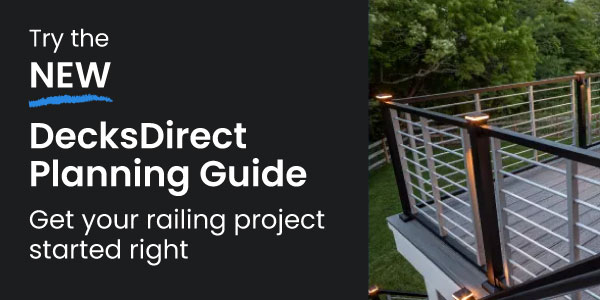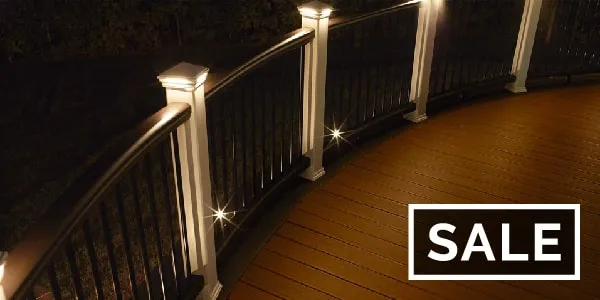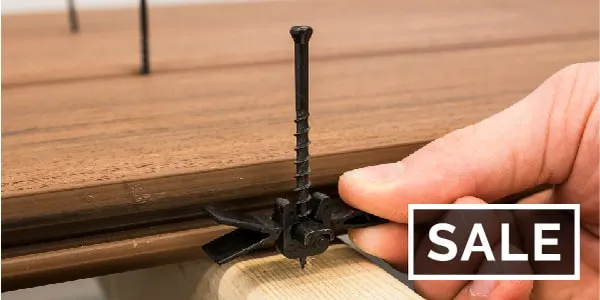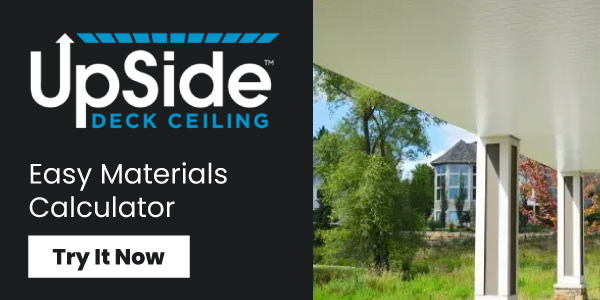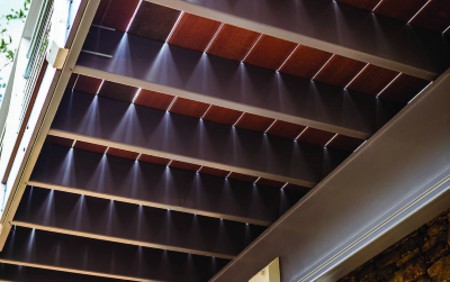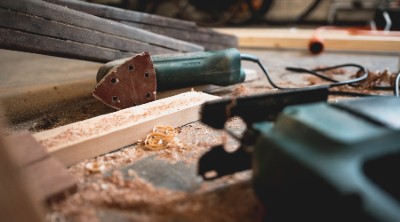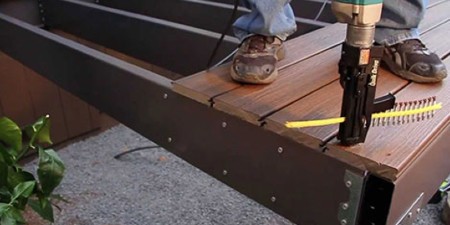How to Square a Deck Frame
From hosting parties to enjoying the quiet of nature in the morning; adding a strong, outdoor space to your home is always a good choice. A new deck build increases both the monetary value, overall quality of life, and curb appeal of your living place all at once. A crucial structural factor to check in your existing deck space or new deck build is that your deck frame is squared up properly against your home.
Attaching to the ledger board of your home, deck frames should be squared up and plumb against the house or structure. This will provide a more secure hold throughout the years, less deck sway, easier decking installation, and minimal deck board waste to keep budgets low.
Here are some tips on how to build a squared deck frame and how to check if your deck frame is squared properly.
Using the 3-4-5 Rule to Find a Square
The 3-4-5 rule is a simplified way of referring to the Pythagorean theorem. Remember when teachers told you would help you in real life? Turns out they might have been right! Using basic Mason's Strings, String Lines, or Nylon Rope you can check that your deck framing is square and plumb.
The basics of the 3-4-5 rule states that if the shortest side of a triangle measures 3 feet long. The leg extending outwards from it at 90° measures 4 feet long, and then the longest side of the triangle will measure 5 feet long.
This well-known measuring technique can be multiplied out to achieve different triangle measurements to fit your project while still achieving a 90-degree angle. These larger examples include:
And so on! You can multiply this same equation out until you find the exact size you're looking to work with. This can help increase accuracy when attaching on larger walls or when fastening more involved structures.
The genius of this deck building technique is that it simply requires the DIY-builder or contractor to create a triangle. Laying out a triangle in the corner of the frame that is to be square (90°) to each other and the ledger board.
How to Use the 3-4-5 Rule to Build Square Corners
With your deck frame set in place, but not fastened together completely, measure the top of the ledger board 3 feet away from the corner. Mark this location. Then, on the top of the side rim joist, measure 4 feet out from the corner. Mark this location.
Extend your tape measure between the two marks and slowly move the rim joist from side to side until the marks are exactly 5 feet apart. At this point, the two pieces are square.
Larger triangles, with sides of 6-8-10 and 9-12-15, will yield even more accurate results. Once your deck corners have passed the initial 3-4-5 test check, we recommend trying out the larger combinations for an additional peace of mind.
How to Check If Your Existing Deck Frame is Square
Experiencing some unsightly gapping between the decking and ledger boards? Feeling some unusual movement in that area of your deck? It's possible that your deck frame wasn't built properly squared. It also may have shifted over time and exhibits loose structural hardware. These are a few of the typical reasons why you may be working with a non-square or plumb deck frame.
Check your deck frame using two tape measures. This method only works on deck structures that feature symmetrical sizing.
Standard square or rectangular decks will require you to measure diagonally from corner-to-corner on both sides. These measurements should be exactly equal. For more unique deck shapes and designs such as octagons or hexagons, you will want to select two equal distances from opposite sides of the polygon.
Obviously, the more square the frame, the better. Slight tolerances can be adjusted before the joists are installed to prevent exaggeration. Compare the opposite lengths of the perimeter of squares and rectangle forms - these lengths should be the same. Using a square and a 4’ level will also help verify that your deck form is level.

